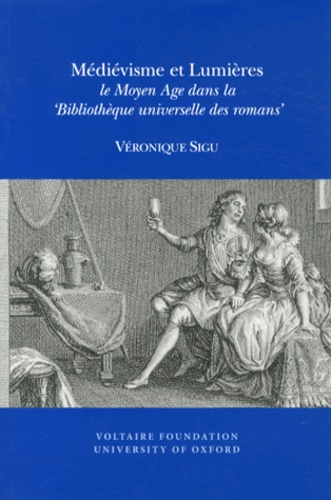Stephanie
Trigg. Shame
and Honor: A Vulgar History of the Order of the Garter.
Philadelphia: University of Pennsylvania Press, 2012.
Reviewed
by: Emily Griffiths Jones (egjones@mit.edu)
Although
recent job lists have occasionally made me rue the day I chose as a
graduate student to pursue Early Modern rather than medieval studies,
Stephanie Trigg’s Shame
and Honor made me
delighted to be what I am: a scholar of another period who remains
fascinated by the medieval, both in terms of its resonances
throughout later eras and its enduring influence on contemporary
popular culture. Trigg is a medievalist who aims in this book to
build “a bridge between two disciplines that have sometimes seemed
antithetical”—medieval studies and medievalism studies—and who
successfully presents a vibrant example of how diverse fields of
literary, historical, and cultural studies might speak to one another
(11). Shame and Honor
is an unconventional
and ambitious history of the Order of the Garter from its foundation
in the 1340s through the present day, one that flouts usual
strictures on periodization and responds to the growing demand for
scholarship that rethinks such boundaries.
Trigg
seems to have chosen the Order of the Garter for her subject both out
of personal enthusiasm for its strangeness and for its exemplary
illustration of how the historical phenomena of the Middle Ages
adapt, or are adapted, to later fetishizations of the medieval.
Pointing to the Order’s “more or less continuous history of
activity” since its founding, she proposes that it “resonates
both backward and forward in time” as a medieval institution “and
as an ongoing project of medievalism” (3, 5). Her book takes as its
“repeated theme […] the necessary tensions between the Order’s
periodic appeals to its medieval foundations, on the one hand, and
its insistence, on the other, that it can update itself and remain
responsive to the ever-changing imperatives of modernity” (6).
Trigg is quick to note that Shame
and Honor does not
seek to offer “a straightforward or comprehensive narrative of the
Order’s history” and in fact that it “works against
conventional chronologies.” (14, 13). She characterizes it instead
as “a symptomatic
long history,” one
which critically examines certain key moments when the Order
considers its own odd origins and interrogates or reinvents its
practices to suit its present needs (14). In addition to resisting
the limits imposed by strict diachronic narrative, Trigg proposes
that in order to fully grasp how the Order has transformed, we must
explore it simultaneously “in historical, cultural, and imaginative
terms”: accordingly, her analysis throughout the book rests on
striking examples not just from history, but also from literature and
popular culture (11). Shame
and Honor is a “vulgar
history” of the Order of the Garter because it depends both upon
the sexuality inherent in the Order’s foundational myth—in which
King Edward III glorifies an undergarment that has fallen from a
lady’s leg—and upon unofficial popular impressions and
interpretations of the Order.
The
book is divided into three parts. The first, “Ritual Histories,”
presents a roughly chronological account of the Order’s origins and
its first few centuries. In chapter one, Trigg establishes the three
concepts that will be crucial to the rest of her analysis: “ritual
criticism,” the ongoing and often fraught conversation about the
Order’s origins and practices; “mythic capital,” whereby the
medieval period’s aura of mystery and romance continually
regenerates the Order’s cultural status; and “medievalism,” the
reimagining of the Middle Ages. Here, Trigg introduces the myth of
the Order’s foundation, the enigmatic motto Honi
soit qui mal y pense (“Shamed
be he who thinks evil of it”), and the way both the myth and the
motto entwine the concepts of honor and shame. The continuous history
of the Order, Trigg suggests, is deceptive, since cultural senses of
the honorable and the shameful are always in flux; however, the
contentious discourse about the Order’s origins and ritual
practices enhances its mythic capital, and so ensures the ongoing
vitality of both the Order and debates surrounding it.
The
second chapter rehearses what we know (and what we do not) about the
Order’s medieval foundation and its central mythology; Trigg argues
that the ambiguity of the motto, which “celebrates its own
ambivalence,” and of the founding story contributes to the Order’s
mythic capital by “seem[ing] to confer a kind of authority […] on
those cunning or bold enough to decode” the occluded medieval
“knowledge” (71, 68). Her case is bolstered by short readings of
several early texts that reference the Order and explore the
intertwining of shame and honor, femininity and masculinity, and
sexuality and chivalry: Sir
Gawain and the Green Knight,
the 1460 romance Tirant
Lo Blanc, and Polydor
Vergil’s early sixteenth-century Anglica
Historia. Trigg
demonstrates how the “persistent fascination with” and “equal
distrust of” the Order’s sexy origin stories “[generate] rather
than [close] down interpretations” (65, 71).
In
chapter three, Trigg considers the first few hundred years of
historical commentaries on the Garter and how they critique and
renegotiate the medieval past, balancing the Order’s mythic capital
with the embarrassment engendered by its foundational eroticism
(whether romantic and heterosexual or chivalric and homosocial) and
by the temporary humiliation of the monarch. She suggests that “the
very medievalness” that these histories must confront “plays an
important role in the freedom of invention,” proposing that the
Renaissance witnessed the “gradual development of a
self-consciously modern scholarly method, one that takes active
pleasure in sifting and sorting various medieval accounts” (106,
116). Early scholars of the Order and its rituals were both attracted
to and made anxious by its medieval heritage, and by “the potential
of medieval tradition to confer shame and honor” (123).
Part
two, “Ritual Practices,” is less chronological and more thematic
in its explorations of the Order’s medieval legacy. Chapter four
looks closely at the concept of shame—the flip side of the Order’s
capacity to distribute honor—through the ritual expulsion of its
members. Such ritual, Trigg argues, reflects “the uneven survival
of medieval chivalry in postmedieval culture” (128). The chapter
incorporates both historical examples of the dismissal of disgraced
knights, in which period-specific politics merge with medieval ritual
practice through “stripping the knight of his chivalric
accouterments,” and brief literary examples drawn from Sir
Gawain, Malory’s
Morte D’Arthur,
and (with some reductiveness) Shakespeare’s I
Henry IV (136). It
also explores the potential shamefulness of too much ritual pomp, in
which the honor of the Garter risks becoming ludicrous, and again
addresses the relationship between shame and sex through unruly
popular songs that mock “attempts to regulate the distribution of
shame and honor” (165).
The
fifth chapter considers historical moments of ritual reform and
change when the Order challenges, debates, or reflects upon
medievalist tradition. Here, Trigg presents a compelling narrative in
resistance to “proud” histories of the Order that stress
tradition, evolution, and continuity; instead, she emphasizes
instances of rupture and forgetting (171). These include moments of
reform, such as Edward VI’s anxious de-Catholicizing of medieval
tradition, and (most interestingly) the highly irregular history of
women in the Order before their formal admission under Elizabeth II.
Trigg reminds us that the Order is highly capable of adaptation and
social change without necessarily conforming an orderly or
progressive social teleology.
Chapter
six, which explores medievalism through gender and the embodied
performance of wearing the Garter, is perhaps the book’s strongest
and most exciting section, in which Trigg’s capacity for nuanced
criticism and her commitment to a multidisciplinary approach are most
richly evident. Here, she performs engrossing readings of visual art,
examining how the monarch performs the bestowal of the Garter; a
reading of film alongside historical example, conceptualizing a
“queer Garter” as “a sign that inaugurates shifting sexualities
and multiple temporalities” (212); readings of portraiture and
funeral effigy, showing how both female and male bodies problematize
and transform Garter traditions; and finally a reading of a novella,
Max Beerbohm’s Zuleika
Dobson, revisiting
problems of shame and honor through wardrobe choices in early
twentieth-century “dandy fiction.”
The
third and final part of Shame
and Honor, “Ritual
Modernities,” integrates the first two parts’ chronological and
thematic approaches. Chapter seven recounts the history of the Order
in twentieth and twenty-first centuries, exploring the intersections
of the medieval with the modern and postmodern. Trigg proposes, quite
convincingly by now, that we might read the English monarchy’s
“long history of overcoming shame, scandal, and political
challenges”—sexual and otherwise—“as a long, continuous gloss
on the Garter motto” with its “defiant magic” (251). She poses
the question of “how medieval, now, is the Order of the Garter?”,
considering contemporary issues of ritual performance, costume, and
photographic portraiture, and answers “that the increasingly vague
and shifting notion of ‘tradition’ [has] displace[d] the
historical specificity of the Order’s medieval origins” (252,
263). Today, medievalism has sometimes become a form of play or
pastiche, both for the monarchy and within the popular or public
sphere. Ultimately, Trigg concludes, the Order’s role at any point
in time, including today, is bound up with its beginnings: it can
never fully “resolve the question of its origin, and will never be
able to acknowledge the medievalism of the medieval thing at its
heart” (275).
As
someone who works in seventeenth century studies, I might
occasionally have been grateful for a more straightforwardly
chronological approach that granted more equitable attention to
successive periods or regimes. For instance, while Trigg offers an
interesting extended discussion of Edward VI’s sixteenth-century
concern about the Order’s Catholic associations with Saint George,
her treatment of Charles II’s seventeenth-century relationship to
the Order is mostly limited to a brief comment on his reaffirmation
of monarchy, and references to the Interregnum—and to what the
“shame and honor” of the Order might have meant then—occur only
in passing. Readers may find their own special areas of interest
similarly underrepresented here. However, Trigg is forthright about
the fact that her book is a collection of illuminating case studies
rather than a comprehensive historical narrative, and it is a
fascinating one. Her work successfully invites further scholarship by
encouraging readers to ask their own questions about how the Order’s
role in one circumstance might transform in another. While Shame
and Honor’s
ambitious project of considering six and a half centuries of Garter
history may uncover more material through some eras, genres, and
themes than through others, it introduces richly provocative ideas to
scholars of any period with an interest in medievalism.
Emily
Griffiths Jones
Massachusetts Institute of Technology
Massachusetts Institute of Technology



